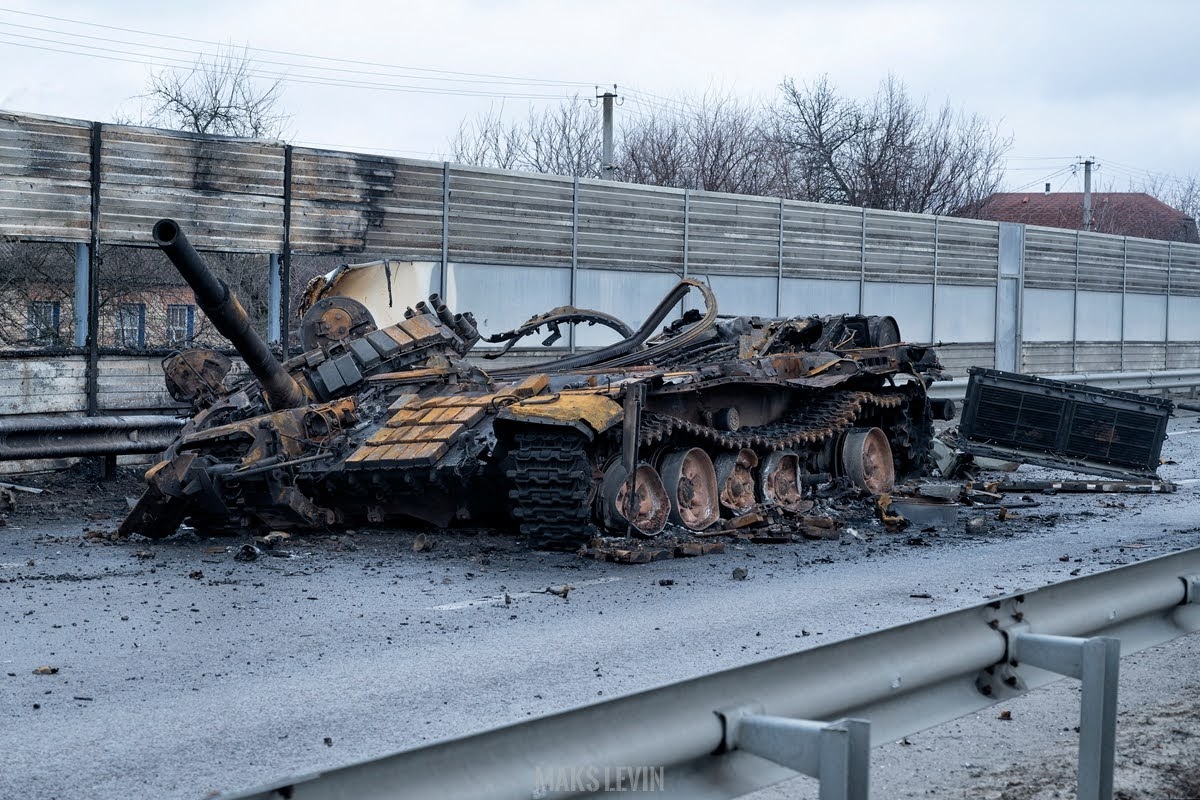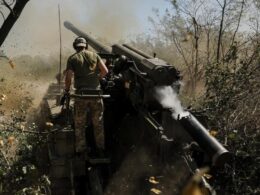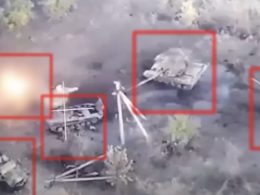Aerial bombs enable Russian advances on Avdiivka; encirclement loomsHowever, despite the limited means of destruction of Russian aircraft, last week Ukrainians managed to shoot down four Russian fighters and bombers in the skies over the occupied territories of Ukraine. In the meantime, Ukraine continued to use long-range kamikaze drones to target strategic facilities deep behind the enemy lines inside Russia, hitting Russian oil refineries and weapons manufacturing plants in the Russian rear. The situation for Russia's Black Sea Fleet near occupied Crimea (southern Ukraine) has deteriorated after Ukrainian naval kamikaze drones destroyed another large Russian landing ship, Caesar Kunikov, near the occupied Ukrainian peninsula. This is the fourth large Russian landing ship destroyed by Ukraine since the start of the full-scale invasion in February 2022.
The fall of the Ukrainian stronghold
Russia launched its onslaught on Avdiivka on 9 October 2023, attacking the Ukrainian city from several directions simultaneously: from northeast, east, south, southwest, and southeast. After almost a month of heavy fighting, Russian troops managed to advance a little on the flanks north and south of Avdiivka. However, this advance came at a significant cost and did not solve any of the tasks set by the Russian command. All key ground lines of communication of the Ukrainian garrison in Avdiivka remained under firm Ukrainian control, which allowed Ukraine to rotate its troops and supply them with ammunition, fuel, and food. Tactically, capturing Avdiivka allows Russia to control vital roads and the railway to Donetsk, which has been occupied by Russia since 2014. Avdiivka is less than ten kilometers north of Donetsk, a vital Russian logistics hub in eastern Ukraine. Control over Avdiivka allowed Ukraine’s Armed Forces to strike at all Russian ground lines of communication around Donetsk using tube artillery.
The Russian military command continued to amass forces and throw its troops in the meatgrinder of the Avdiivka offensive, attempting to capture the city's northern suburbs and approach the Ukrainian garrison's critical supply route. Despite heavy losses, Russian troops advanced east of Stepove, a small town north of Avdiivka. Control of Stepove would allow the Russian army to approach the H0542 road and disrupt the logistics of the Avdiivka garrison. Without the fire control over the H0542 road and the capture of the Avdiivka Coke and Chemical Plant, a heavily fortified area held by Ukrainian defenders northeast of Avdiivka, the Russians could not undermine the stability of Avdiivka's defenses. Ukrainian troops continued to hold the line in these key areas of the Avdiivka sector and did not budge.This is how a guided aerial bomb attack far away looks like
— Euromaidan Press (@EuromaidanPress) February 18, 2024
Russia has a near limitless supply of these cheap& powerful bombs. With their help, Russia reduced Avdiivka to rubble that Ukrainians could no longer defend
Ukraine has no defense against these bombs, fired by Russian… pic.twitter.com/lfG6PTFzli

Map by Deep State.
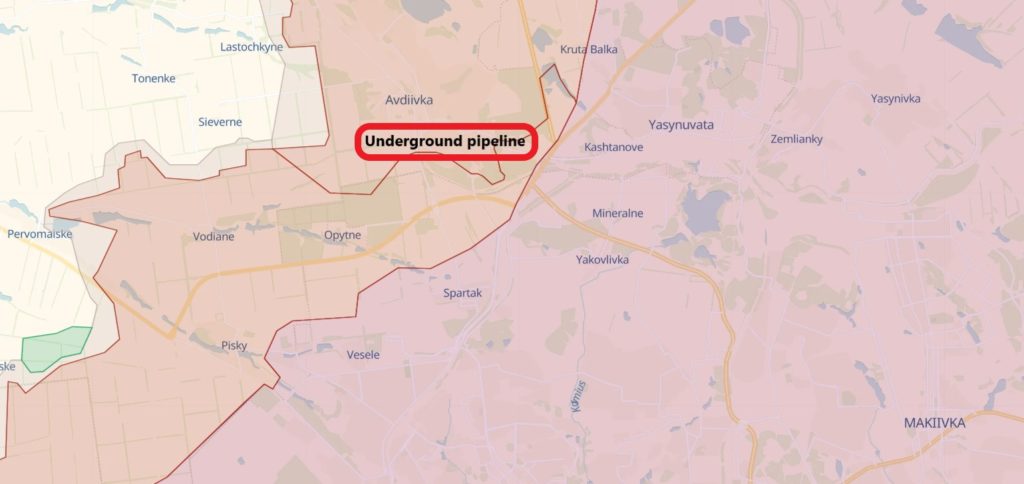
Map by Deep State.
Despite a huge 7:1 numerical advantage, the Russian forces were pushed away from the Ukrainian key supply route north of Avdiivka. However, the Russian army continued to deploy more reserves to outnumber Ukrainian defenders and pushed forward. On 15 February, Ukrainian troops were forced to retreat after being almost encircled in the Zenith industrial zone, a heavily fortified area south of Avdiivka. The occupation of this area opened the gates to the city from the south. Russian troops entered the southern neighborhoods of Avdiivka and began to advance towards the city's downtown up north, where other Russian units had already approached the key supply route for the Ukrainian garrison and cut it off.Russian vs Ukrainian forces are 7:1 in #Avdiivka
— Euromaidan Press (@EuromaidanPress) February 15, 2024
If in Bakhmut, Russians were mix of Wagner convicts & special forces, here Russian contingent is "best strike fist of Russian Federation in Ukraine," consists of GRU & Mechanized brigades, spox of 3 Separate assault brigade… pic.twitter.com/7oPjIMoqQp
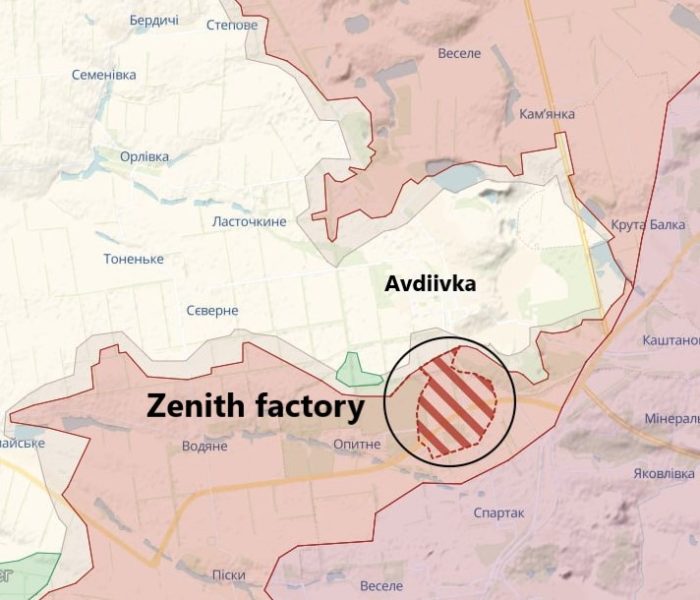
Map by Deep State.
"Based on the operational situation around Avdiivka, to avoid encirclement and preserve the lives and health of servicemen, I decided to withdraw our units from the city. Our soldiers performed their military duty with dignity, did everything possible to destroy the best Russian military units, and inflicted significant losses on the enemy in terms of manpower and equipment. We are taking measures to stabilize the situation and maintain our positions. The life of military personnel is the highest value. We will take Avdiivka back," Oleksandr Syrskyi wrote on Facebook.According to the Russian media, Russia’s military command deployed 16 brigades (around 50,000 troops) to the Avdiivka sector to capture the Ukrainian stronghold. The congratulatory letter that Russian President Vladimir Putin sent to the commander of the Center grouping of the Russian army, Colonel General Andrey Mordvichev, responsible for the Avdiivka offensive, revealed the complete list of Russian military units that took part in the active phase of the operation:
- 30th Separate Motorized Rifle Brigade of the Central Military District
- 35th Separate Motorized Rifle Brigade of the Central Military District
- 55th Separate Motorized Rifle Mountain Brigade of the Central Military District
- 74th Separate Motorized Rifle Brigade of the Central Military District
- 1st Separate Motorized Rifle Brigade of the 1st AC
- 9th Separate Motorized Rifle Brigade of the 1st AC
- 114th Separate Motorized Rifle Brigade of the 1st AK
- 1454th Motorized Rifle Regiment of the 1st AK
- 10th Tank Regiment of the 1st AK
- 6th Tank Regiment of the 90th Tank Division of the Central Military District
- 80th Tank Regiment of the 90th Tank Division of the Central Military District
- 239th Tank Regiment of the 90th Tank Division of the Central Military District
Why Avdiivka fell to RussiaUkraine deployed at least 14 military units (around 8,000 troops) at different stages of the defensive operation in the Avdiivka sector. The list of Ukrainian units that took part in the defense of Avdiivka is as follows:
- 110th Separate Mechanized Brigade
- 53rd Separate Mechanized Brigade
- 47th Separate Mechanized Brigade
- 67th Separate Mechanized Brigade
- 3rd Separate Assault Brigade
- 71st Hunting Brigade
- 68th Hunting Brigade
- 59th Motorized Infantry Brigade
- 36th Marine Brigade
- 35th Marine Brigade
- 129th Troop Carrier Brigade
- 25th Separate Airborne Brigade
- 503rd Separate Marine Battalion
- 45th Separate Rifle Battalion
- Omega Special Operations Forces unit
- The International Legion of Territorial Defence of Ukraine
- Ukraine’s Main Directorate of Intelligence units
- Separate Presidential brigade
- 24th Border Guard Detachment
“The Ukrainian defenders inflicted huge losses on the Russian military and destroyed a significant reserve of the Russian occupying forces, which they had planned to use in other areas of the front for offensive actions,” Oleksandr Tarnavskyi said.According to Oleksandr Tarnavskyi, from 10 October 2023 to 17 February 2024, the losses of the Russian troops in the Avdiivka direction amounted to:
- 47,186 personnel;
- 364 tanks;
- 248 artillery systems;
- 748 armored fighting vehicles;
- five aircraft.
Russian winter offensive on eastern and southern fronts
The Russian army has also stepped up its offensive in other areas of the eastern front. Russian troops tried to advance near Kupiansk in the Kharkiv Oblast, in the Bakhmut sector (Donetsk Oblast), and near Novymykhailivka, south of Mariinka in the Donetsk Oblast.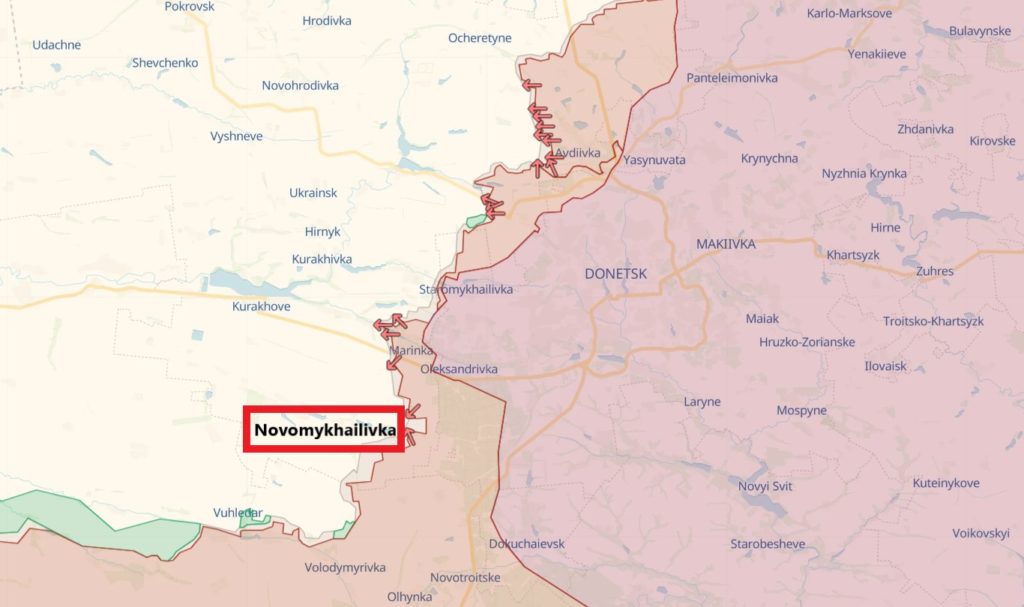
Map by Deep State.

Map by Deep State.
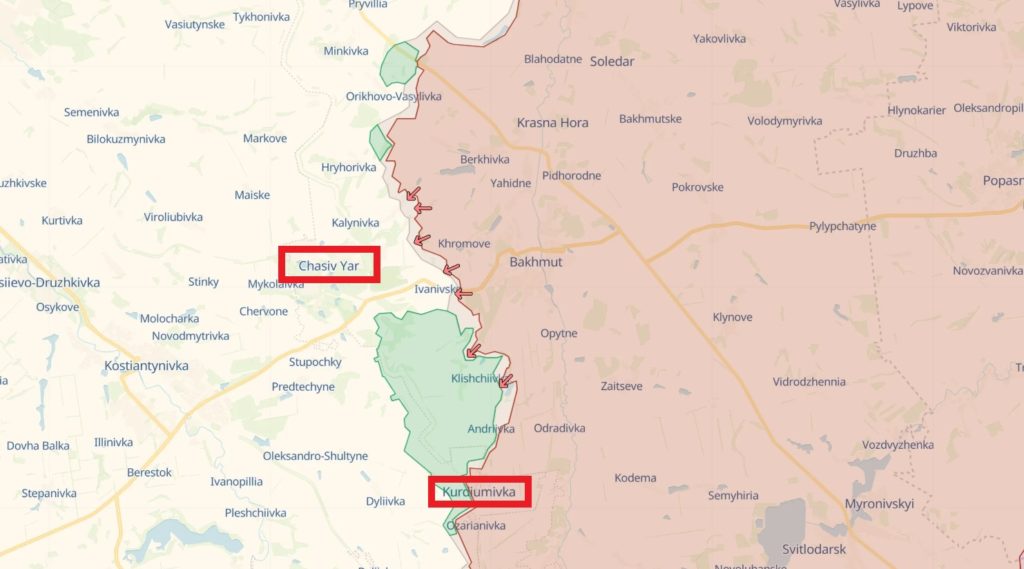
Map by Deep State.
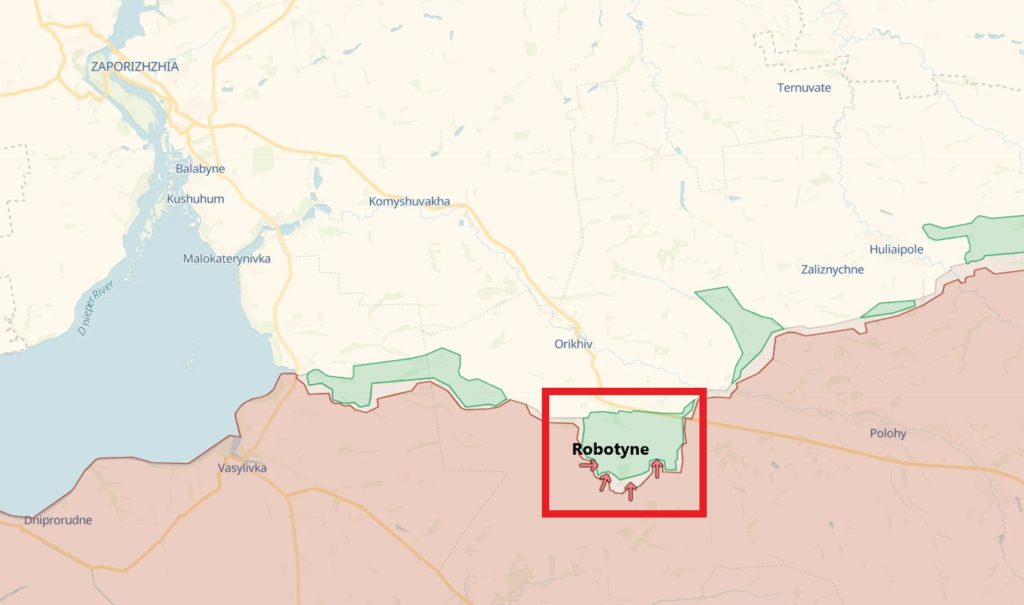
Map by Deep State.
Russian troops filmed the GLSDB’s debris and posted it online. The Russians claimed that the wreckage of the GLSDB was found after a strike on Russian forces on 13 February near Kreminna in the Luhansk Oblast (eastern Ukraine). Ukraine also actively uses domestically produced long-range kamikaze drones to hit Russian oil refineries and weapons manufacturing plants deep inside Russia. On 15 February, Ukrainian kamikaze drones hit an oil depot in Kursk (western Russia) causing a large fire. https://twitter.com/EuromaidanPress/status/1757915377387147332 Ukrainian strikes on Russian oil and gas infrastructure have a dual purpose. Firstly, Russian oil refineries and oil depots close to the Russian-Ukrainian border supply the Russian army with fuel needed to continue offensive operations in Ukraine. Secondly, a significant chunk of the Russian budget comes from selling oil and gas. According to various estimates, this figure ranges from 25-35%. During the first year of the full-scale invasion of Ukraine, in 2022, Russian exports of oil, oil products, and gas reached $383.7 billion, according to data from the Federal Customs Service of Russia. More recent official data is not yet available. Today, Russia has about 30 large refineries and another 80 mini-refineries. The largest refineries in Russia are located in western and southern parts of Russia, in the following cities: Kirishi (St. Petersburg), Ryazan, Kstovo (Nizhny Novgorod), Volgograd, Yaroslavl, Perm, Moscow, and Tuapse. Most of these refineries are within the reach of Ukrainian long-range kamikaze drones.This video appears to be the first recorded instance of the use of a Ground Launched Small Diameter Bomb (GLSDB) by Ukraine's Armed Forces
— Euromaidan Press (@EuromaidanPress) February 14, 2024
The video was published by a Russian military blogger on Telegram. The Russians claim that the wreckage of the GLSDB was found after a… pic.twitter.com/4dO6Og3uAo
Ukrainian strikes on the Russian Black Sea Fleet
Besides striking at Russian strategic facilities inside Russia, Ukraine is methodically decimating the Russian Black Sea Fleet near occupied Crimea (southern Ukraine). On 14 February, Ukrainian naval kamikaze drones destroyed a large Russian landing ship, Caesar Kunikov, off the coast of the Russian-occupied Crimea. It is the fourth landing ship from Russia’s Black Sea Fleet to be sunk since the beginning of the full-scale invasion in February 2022.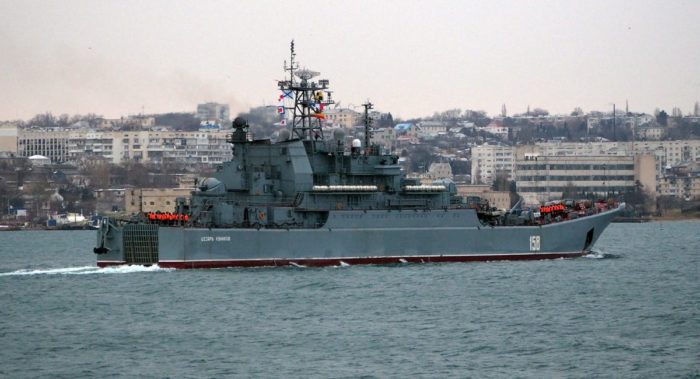
- Ukrainian naval drones sink large Russian landing ship Caesar Kunikov
- British Intel: Russian commander of Black Sea Fleet dismissed likely due to Ukraine's successes sinking Russian ships
- Ukraine's drone war across Russia cuts into oil revenues
- Defense Express: Ukraine uses GLSDB for the first time in human history, shocks Russia
- Biden: Lack of ammunition forces Ukraine to retreat from Avdiivka
- Russian forces conduct largest airstrikes near Avdiivka in 2024


